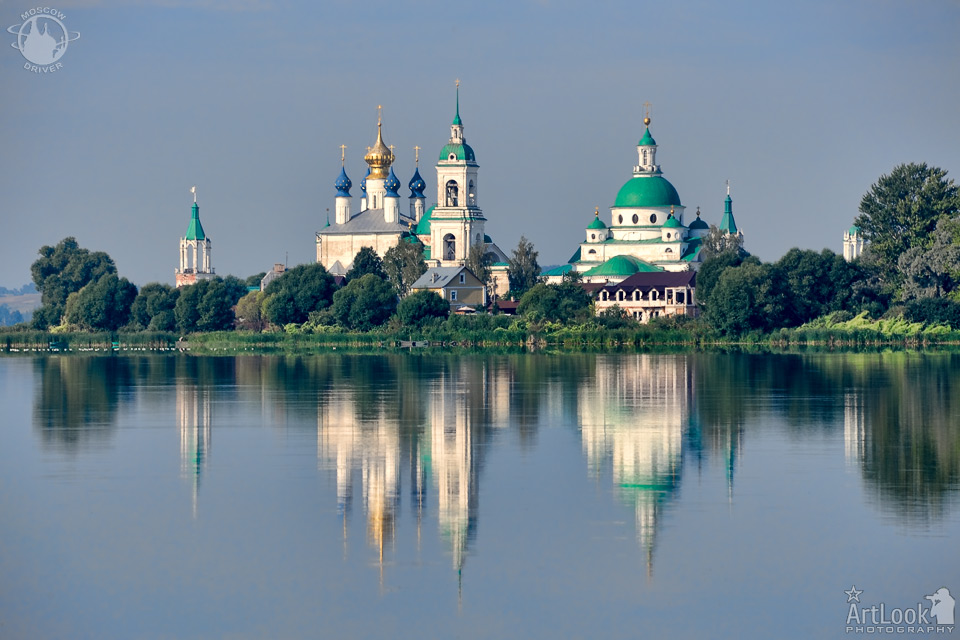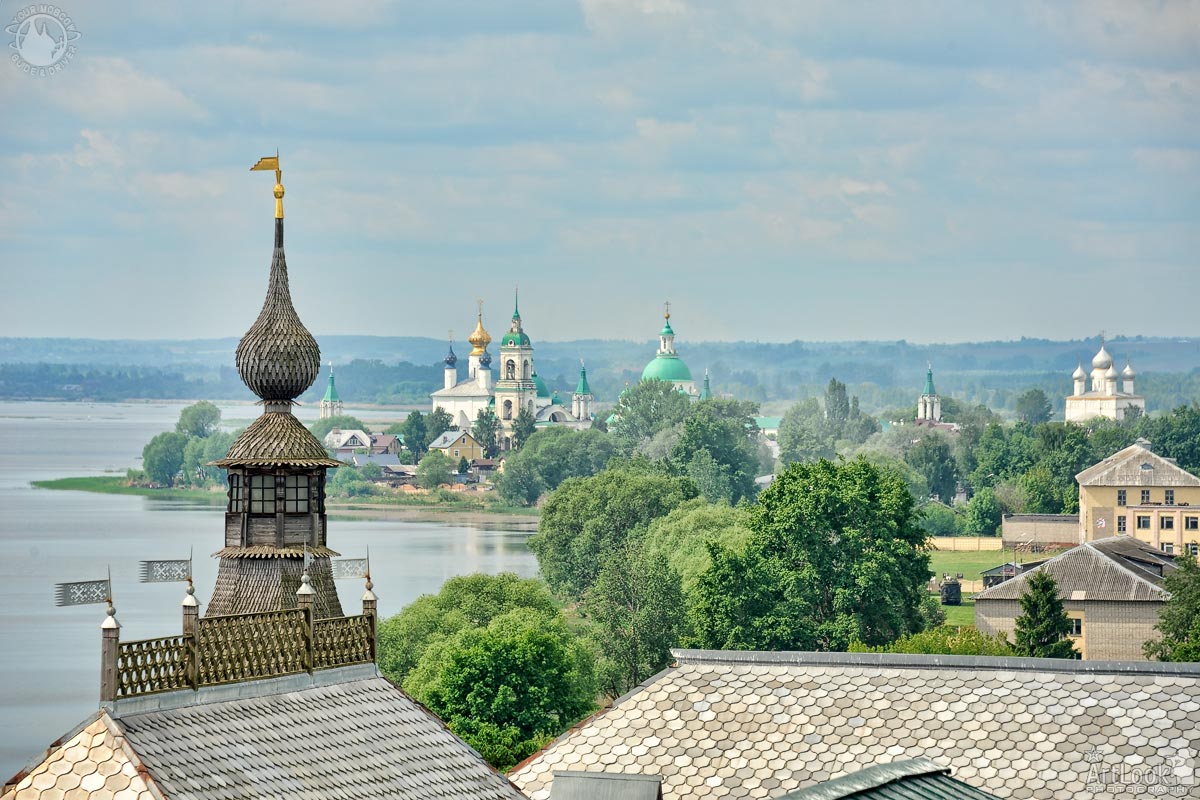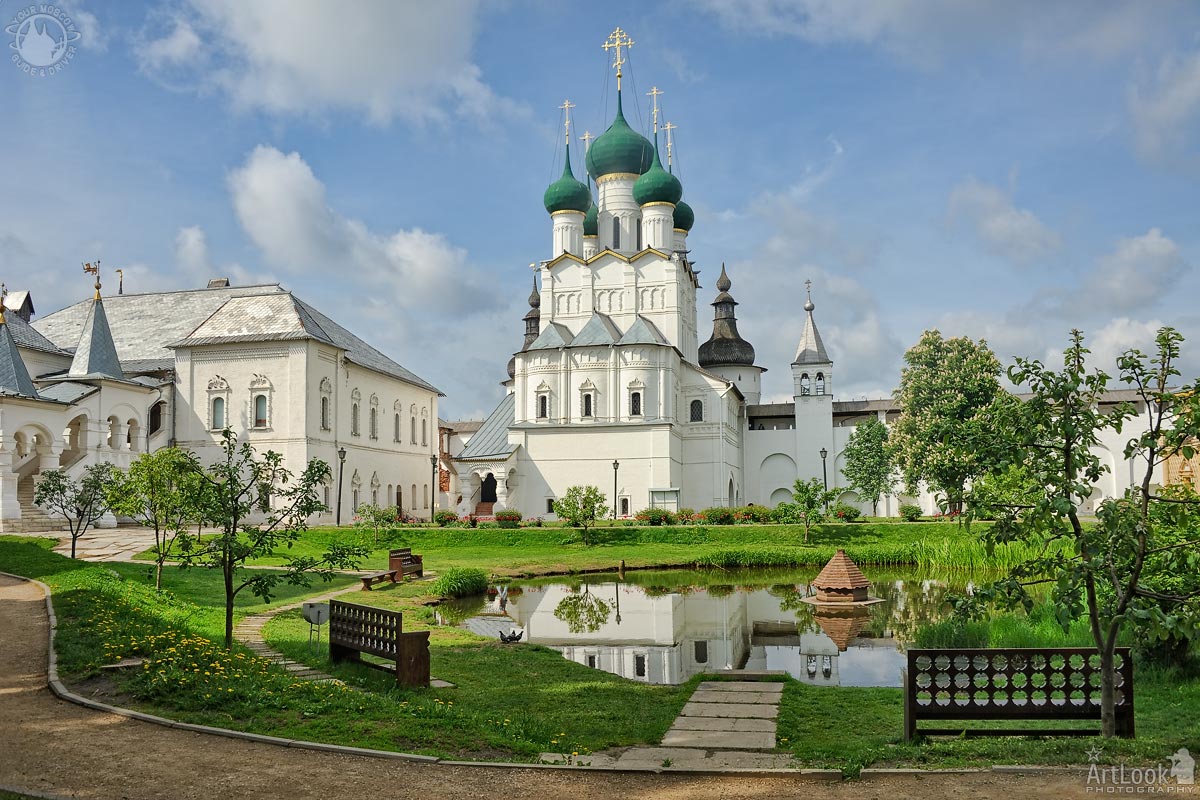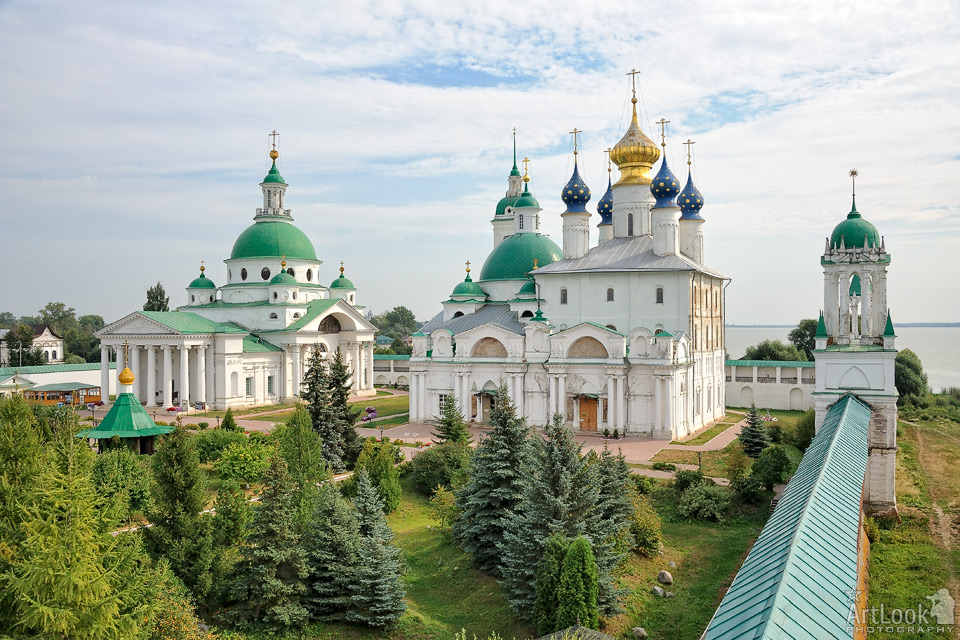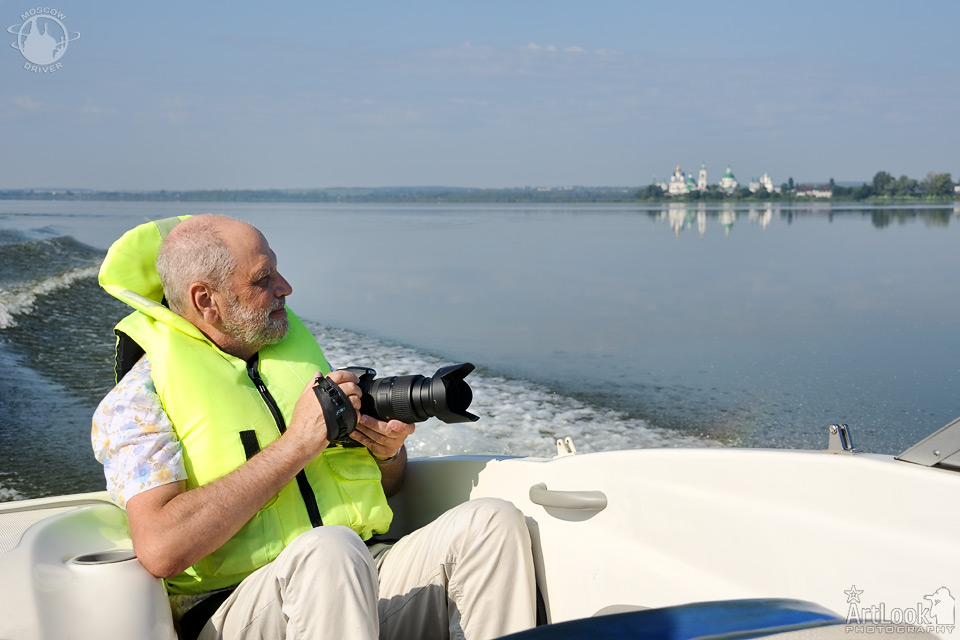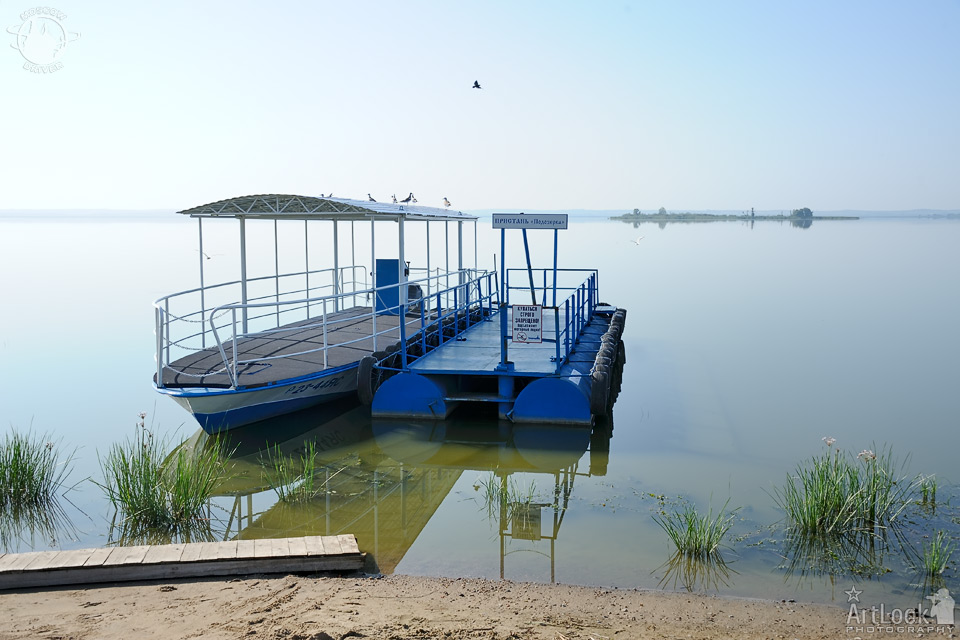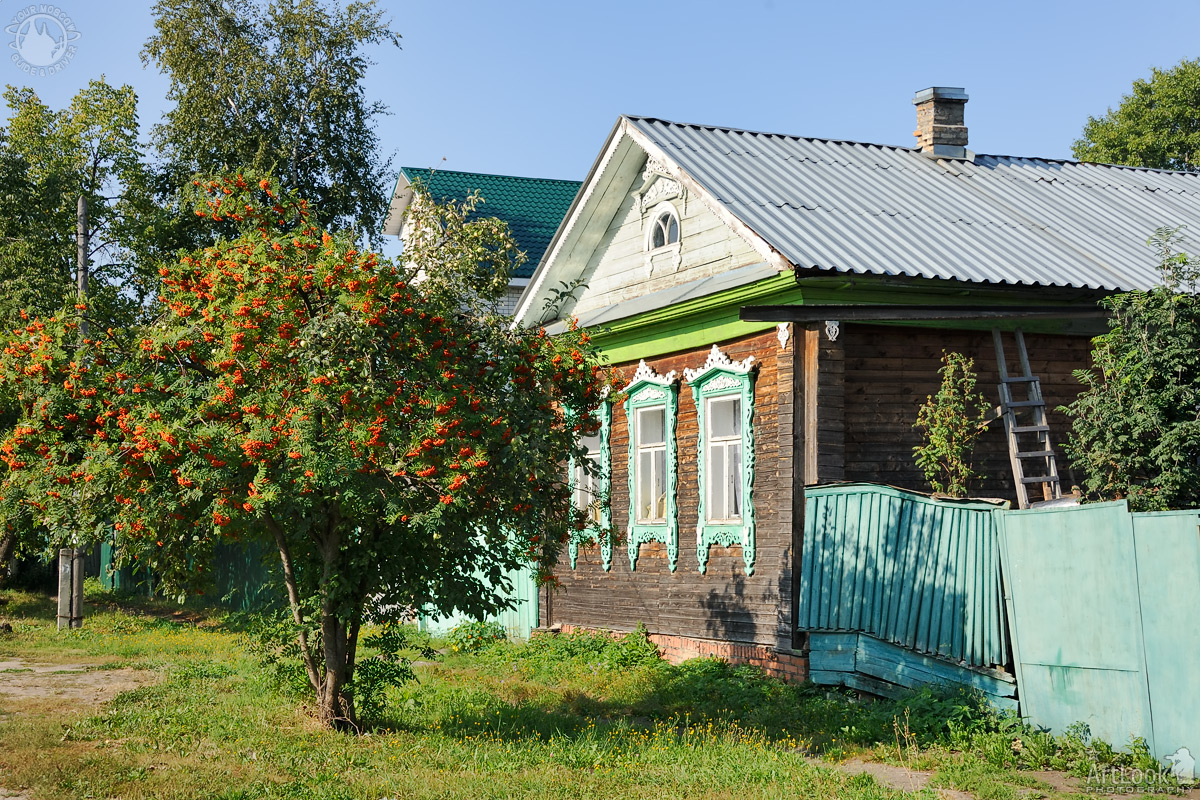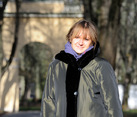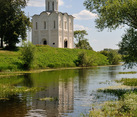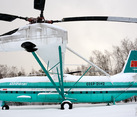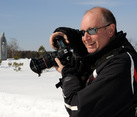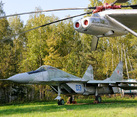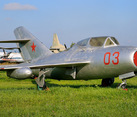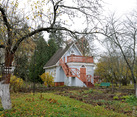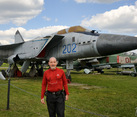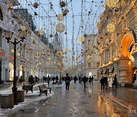Rostov Velikiy – Ancient Town on the Lake Nero
In the very center of Russia there is a place covered with thick forests and mirror like surface of water. This place has become a cradle of Rostov Velikiy, the great and unique city.
Rostov Velikiy (The Great) is one of the oldest in the country and a tourist center that must-visit during your unforgettable adventure of Russia’s Golden Ring. The town is located on the shores of Lake Nero, 202 kilometers (126 mi) northeast of Moscow in Yaroslavl region. In present time its population about 32000 people.
Rostov Velikiy is an ancient city, first mentioned in “The Chronicle of Past Times” in 868 a.d. Long before formation of Vladimir Suzdal Principality the city became a center of a big densely populated region, the history of which was lust in ancient times.
Nowadays Rostov Velikiy is an universally recognized pearl of “Golden Ring” stricken by its history and architecture. Rostov Kremlyn, cathedrals and monasteries attract a lot of believers as well as antiquity lovers. As thousands years ago you can enjoy fascinating panorama of Rostov Velikiy from the shore of Lake Nero, the cradle of Rostov Land.
Rostov was an immutable participant of all political events, connected with activity of all Grand Dukes and Rusian tsars; it always ran trading policy, gathered cultural wealth, was an advanced post of North-East Russia. In 1070 Rostov Velikiy became an Episcopalian Centre of the Russian Orthodox Church and the place of the First Cathedral of Dormition (Uspenski Sobor). It was the place of the first theatre, founded in 1703 by Snt Dmitry of Rostov, and the only place in Russia with the unique art handicraft of finift making (painting in enamel).
On coming to Rostov you’ll plunge in it’s history, touch the saints of orthodoxy, you’ll be charmed by Rostov nature.
Rostov Kremlin - The Metropolitan’s Courtyard
The city was founded in the mouth of river Pizerma, fell into Lake Nero. The princely courtyard located on the territory of now operating Church Boris and Gleb and the Nicola Church on Podozerje. The city was developing along the bank of Lake Nero and had “free” planning. After its complete destruction as a result of Plish-Lithauanian invasion the tsar Mihail Fedorovich ordered to construct a ground defense (1630-1632) according to the project of a Dutch engineer Yan Komelius and to build stone palaces and temples.
With the construction of ground stronghold the city began to change its image, and the kernel with trading squares and temples was named the Kremlin (fortress). The Metropolitan’s courtyard, the Cathedral of Dormition, the Belfry and the church of the Savior-on-the-Market place created an unusual architectural ensemble that stroked the imagination of the empress Ekaterina II. In 1779, she ordered to approve a General plan for “regular” building works in Rostov, the merit of which was creation of esplanade an open area around the ground fortress for better perception of the Kremlin ensemble. Till nowadays Rostov has preserved on the whale, it’s planning structure though it suffered a great loss.
An architectural ensemble of the Rostov Kremlin (the Metropolytian’s courtyard) is a visiting of Rostov. Reflecting in the waters it thrills us this its grandeur. The ensemble was built in the second half of the 17 Century under the leadership of Metropolitan Iona as his Residence. It embraced old constructions existed before: Princes's Chambers, Hierarch Chambers, the Cathedral of the Dormition (more 15 temples were built near it in the 17 c.), 11 towers, and other buildings. All of the buildings are interconnected in a single whole by mighty citadel walls with passages almost one kilometer long. The Kremlin ensemble is harmonious and compositionally balanced.
The Cathedral of the Dormition (Uspenski Sobor) became an example of the applied art for all Kremlin Structures. The temple was built in the second half of the 16 c., its interior impresses with height and plenty of light. Here you can see fragments of frescoes dating back to the 17 c. The Cathedral of the Dormition is a burial-vault of Rostov Preinces and Metropolitans.
East from the Cathedral stands the arcade of the famous Belfry. There are 15 bells in the bell-tower, the peal of which is absolutely unique in its harmony and melodiousness. One of them, the Sisoi, weighs 32 tons. The chime of three big bells the Sisoi (1689), so called in honour of Metropolitan Iona's father, the Poliyeleiny (Polyeleos, 1683) and the Lebed (Swan, 1682)-form a joyful major chord; the rest of the bells harmonize with the first mentioned. Since ancient times the chiming of bells (one moments solemn and mournful, the next festive and triumphant) has accompanied the life of the people, sounding fire alarms, summoning congregations, or joyfully greeting heroes. The close proximity of a body of water enhance the remarkably deep resonant voice of the bells, which can be heard many kilometers away.
Numerous Kremlin towers and cupolas of churches make a fantastic impression. And the display of the state Museum-Preserve of the Rostov Kremlin amaze with its collection of enamels, ancient icons, copper castings, coins, wooden sculptures and folk carvings.
The Kremlin is of great value for peoples of Russian Federation and it is submitted to UNESCO for insertion in the List of World Cultural Heritage.
Spaso-Yakovlevsky Monastery (St. Jacob Monastery of Our Savior)
Rostov Veliky introduced wonderful pages in the history of the Russian Orthodox Church. The first cloister the Cathedral of the Epiphany of the Avraamijev Monastery was founded in the 11 c. on the place where Saint Avraamij smashed the pagan god veles with the pectoral cross. The Monastery become a center for Christianity dissemination in North-Eastern Russ.
The Spaso-Yakovlevsky Monastery of St. Dimitri of Rostov is situated in the western outskirt of Rostov Velikiy and one of the most popular tourist sites to visit in the city after the kremlin. The monastery was founded in the 14th century by Saint Yakov (Jacob) of Rostov
Here architects of several generations combined together structures of the 17-18-19 c.c. Spacious, magnificent, rich temples of the epoch of Russian classicism. The Monastery is the place for St. Iacov (1391), Dimitry (1709) and Avraamy (1077) relics, which attract pilgrims from for away Rostov districts.
For six centuries orthodox believers make their journey towards the Revival Pectoral Cross appeared in 1423. Nowadays the Cross in moved to the St. Iona Zlatoust Temple in the village of Godenovo.
According to inventorial book of 1763, old fortification fence of the monastery wasmade of wood logs and starting from the seventeenth century was gradually replaced by stone walls and towers. From one of four octagonal towers visitors of the monastery can watch spectacular views of architectural ensemble of Dmitrievsky Cathedral (Cathedral of St. Demetrius), Zachatievsky Church (Church of the Immaculate Conception of St. Anna) with a church of St. Jacob of Rostov, fortification walls and, of course, beautiful landscapes of the lake Nero.
The Church of the Immaculate Conception was the first stone structure to be erected in the St. James Monastery in 1686. The inscription on the wall informs that it was built under Metropolitan Jonah and was originally called the Church of the Holy Trinity. It was in 1754 that it got the name of the Church of the Immaculate Conception. A square five-domed building is a typical monasterial cathedral combining the clear-cut outlines with the richly decorated interior. The church frescoes executed in 1689—1690 are invalu¬able samples of the Yaroslav school of monumental paining. They illustrate the Old Testament legend of Abraham meeting the Holy Trinity and the life of Christ. A particular emphasis is made on Gospel parables. The audacious masters created complex, multi-figure compositions, depicting a whole host of different characters in motion or in unexpected poses and from complex angles. The carved and gilded iconostasis was made between 1762 and 1765 by the noted wood carvers from Ostashkovo. They were paid one thousand rubles for the work, which at that time was a generous remuneration. All the icons of the iconostasis were executed in 1780 by the court painter Benedictus Vendersky.
Built at the turn of the eighteenth and nineteenth centuries, the St. Demetrius Church is an example of Russian classical architecture and has several distinctive features of the style. These include porticoes, columns, medallions and sculptures in the recesses. The adjacent refectory of moderate height is also classical in design. The interior decoration of the spacious and well-lit St. Demetrius Church deserves special attention. The walls were painted by a Rostov peasant artist, Porphiry Ryabov, in the academic manner of late eighteenth-century painting. The nearby St. James Church (1836) tactfully adheres to the classicist forms. The three-spanned bell-tower erected between 1776 and 1786 complements the architectural ensemble of the two churches and serves as a dominant point of the whole monasterial complex.
Lake Nero and Boat Tour
In summer season, when the lake is not frozen or it is not season for spawning fish, you can enjoy a boat ride from a pier “Podozerka” (At the Lake) on the lake Nero. There are serval options of types of boats offered by locals, here you can take a spead boat for a few people or a slow pleasure boat for a big group of tourists. From the boat, during the 40 min tour, you will see and take amazing photographs of the churches and shining onion-shaped cupolas of the Rostov Kremlin and majestic architectural ensemble of Spaso-Yakovlevsky monastery reflected in the water. Exciting ride for people who like nature, architecture and photography is guaranteed!
The lake Nero is estimated to be about 500 thousand years old, making it one of a few pre-ice age lakes in central Russia. It is the biggest natural water body of Yaroslavl region. The average area of the lake is about 55 square kilometers but it changes depending on the season. The maximum depth of the lake is 3.6 m, length - 13 km, width - 8 km. Lake Nero has a glacial origin so its bottom is covered by a very thick layer of organic slime or of silt sapropel (a sort of ooze used as fertilizer and for other purposes) from 5 to 20 meters. This centuries-old bottom deposits consists of the remains of water plants and living organisms, plankton, as well as organic matter. This mud is used at balneotherapeutic health resorts.
Lake Nero has a lot of fish, as it is the place of spawning and wintering of fish. Many people gladly come here to fish pikes, zanders, breams, perches and roaches (especially in winter).
Beautiful Wooden Architecture
Traditions of wooden building have been existed in Rostov from the times of its foundation. Temples, trading stores, towers were built out of wood with the help of curved and slit dhcor. Stone constrictions appeared in the city from the beginning of the 17 century. Still there are many old wooden houses with decorative curved windows all around the city center at near the main attractions.
Two kilometers away from Rostow on the way to Moscow you can see a wonderful monument of wooden architecture of the 17 c. the Church of St. Iohn Bogoslov, built in 1687-89 on the bank of the river Ishnya. The interior of the church is plain and noble. The trapeznaya (monastery canteen) portal, gallery facades, windows, places for the singers in the church are decorated with magnificent carving. It's the only wooden church with such unique architecture which has survived in Yaroslavl region.
Next
Sergiyev Posad
Related Photos:
About Me in Short

My name's Arthur Lookyanov, I'm a private tour guide, personal driver and photographer in Moscow, Russia. I work in my business and run my website Moscow-Driver.com from 2002. Read more about me and my services, check out testimonials of my former business and travel clients from all over the World, hit me up on Twitter or other social websites. I hope that you will like my photos as well.
See you in Moscow!

